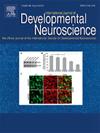The Effect of Transcranial Direct Stimulation Over Cerebellum and Suplementary Motor Area on Balance Functions in Healthy Young Adults: A Resting EEG-tDCS Study
Abstract
This study aims to examine the impact of anodal transcranial direct stimulation (tDCS) targeting the cerebellum (CER) and the supplementary motor area (SMA) on both balance function and resting-state beta activity. A cohort of 28 healthy young individuals participated in the study. Each session involved administering CER, SMA and sham stimulations. Balance assessments were performed before and after stimulation, alongside recording resting-state EEG beta activity. Results revealed a significant increase in the Balance Error Scoring System (BESS) score and certain step distances in the Star Excursion Balance Test (SEBT) following both cerebellar and sham stimulation, as well as in specific step distances of the SEBT following SMA stimulation (p < 0.005). Moreover, there was a noticeable rise in resting-state beta-band power values from pre-tDCS to post-tDCS (p < 0.001). Post hoc comparison analysis indicated a significant enhancement in beta power following cerebellar stimulation (p = 0.034). A correlation appeared between the increase in beta activation after cerebellar stimulation and the SEBT (p < 0.005). The efficacy of cerebellar, SMA and sham stimulation in modulating balance function. It elucidates the modulation of resting-state beta activity through tDCS, particularly highlighting a significant increase in beta activity after cerebellum stimulation, potentially implicating alterations in balance tests consequent to this notable augmentation.


 求助内容:
求助内容: 应助结果提醒方式:
应助结果提醒方式:


